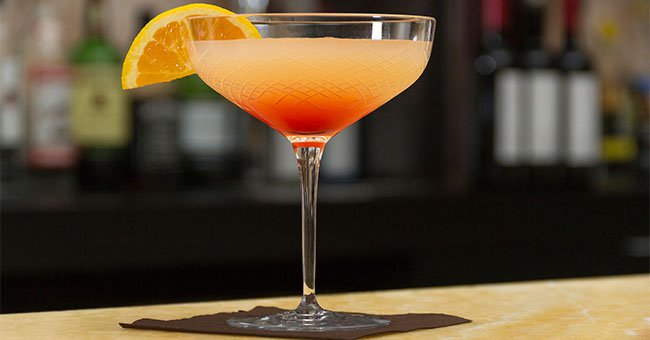The signature cocktail: it’s a given at most establishments, and it can set you apart from other local restaurants and bars, enticing patrons to come back for another pour… and perhaps another after that. Concocting a noteworthy cocktail isn’t a haphazard process. Quite the contrary, in fact. Whether you’re creating it as the house specialty or as a one-off for an event, this drink requires a fine balance between simple and intricate, familiar and alluring, and should speak to the vibe of your bar or theme of the event.
“Anyone can follow a recipe and simply mix up a drink,” says licensed mixologist Cheryl Heisler, founder of Chicago-based Mixed metaPours. “The impact of a ‘signature’ cocktail is in its uniqueness and its ‘point of difference’ from the norm.”
Clearly, creating and settling on a signature cocktail takes time, patience, practice and a heightened level of thoughtfulness. Here are five things to keep in mind that’ll help jumpstart the process.
Narrow your focus
Lest you find yourself overwhelmed at the thought of thousands upon thousands of mixtures you could come up with, narrow your focus.
Start by choosing a singular ingredient and naming it the star of your signature cocktail, which is what Joel Lee Kulp does. He’s the head bartender and co-owner of Williamsburg bars Grand Ferry Tavern and The Richardson.
“Perhaps it’s a certain amaro that I think will help signal a particular season, like spring. Or maybe it’s fresh apple cider that will help bring in autumn,” he says. “Then I’ll work from there. Questions I’ll ask myself: [should I] include all booze, or make it juicy? Will this be served straight up, or as a cooler?”
You can even find inspiration in the spirits themselves. Kelp says that 99 percent of the time it’s the spirit that provides him with the impetus to create and work on something new.
Don’t make it too complex
On that same note, keep your signature cocktail simple.
“Sometimes going to the outer limits can produce really, really cool stuff,” says Kulp. “But we always need to remember that the greatest of all cocktails have three ingredients — the Negroni, Old Fashioned and Manhattan — and are all variations on the same theme.”
He says to limit yourself to no more than five ingredients and, should you find yourself with more than that, really press yourself to determine if they’re all necessary.
Not only does a low maintenance cocktail likely taste better, it’s also easier to whip up.
“If I am asked to create a recipe for one special person, I can make it as complicated as the person him or herself, but if I am going to have to be able to duplicate that drink tenfold every 10 minutes, practicality has to figure into the mix,” adds Heisler.
Let your drink define your establishment
Another aspect, and arguably the most important of all, is to consider the drink’s ultimate goal. For example, if you’re creating a house drink — the one that sparkles at the top of your drink menu — it should define your bar for a patron before she even reads the rest of the menu.
“We need to take into account how we want to present ourselves,” says Kulp. “If I am a fine Italian restaurant, I’m probably going to gravitate towards an Italian spirit before I dig into my Caribbean rum selection. However, if this fine Italian restaurant prides itself on its ‘American roots,’ then perhaps I’ll want to look into mixing bourbon with one of our amaros.”
At the end of the day, it’s all about the cocktail’s eventual home and what function it’s serving.
Consider having more than one
We’re not saying you have to serve twelve different signature cocktails on one menu. That’d definitely qualify as a case of going overboard. We’re just recommending you add a little bit of variety to your lineup.
“Just as most of us change what we eat regularly, I like to change what I drink and serve my guests,” explains Heisler. “In summer, color and flavor palates are lighter and brighter than in the middle of a cold or rainy season. Autumn begs for apples and pumpkins and turning inward while spring is infused with pastels and buds and fresh starts.”
Rotating a menu of seasonal ‘signature’ drinks can provide loyal patrons with something new to look forward to, and with something to sate their seasonal needs. And while they’re happy sipping on a drink that’s fresh to their palate, says Heisler, they’ll have comfort knowing that their old friend will be there for them when the year goes by.
Give your signature cocktail a name
“Part of the fun of a signature cocktail is that it represents more than just another drink option,” says Heisler. “Naming your cocktail is a great way to remind the guests of the reason for them coming together. For example, at a fundraising event for college scholarships I named the signature cocktail ‘The Rosy Future’ to keep the attendees focused on what a difference their donations could make in the lives of the high schoolers who needed their help.”
As you can see, a named cocktail is another way to play into the mission of your establishment or the event theme. Like the ingredient list, though, you’ll want to keep it relatively easy. As a general rule, keep the number of words in your title to a minimum, make sure the title is easy to pronounce, and don’t be afraid to get witty.




